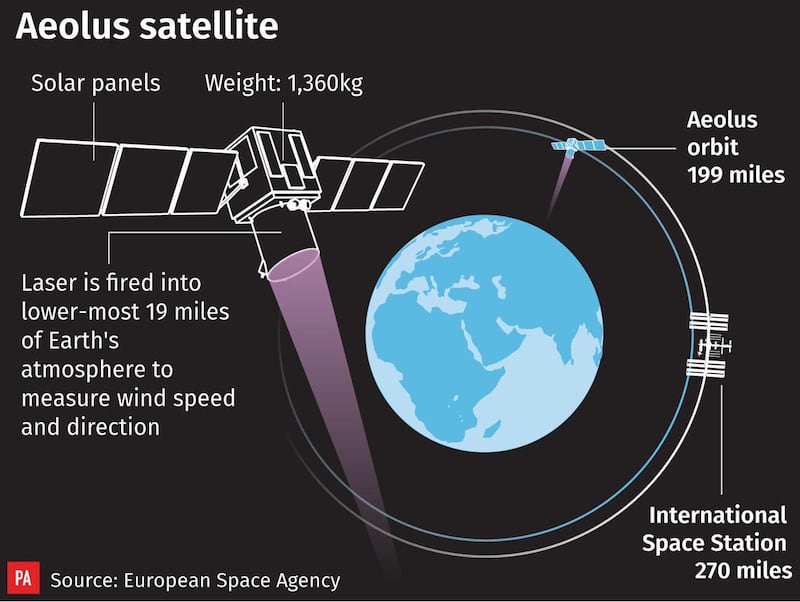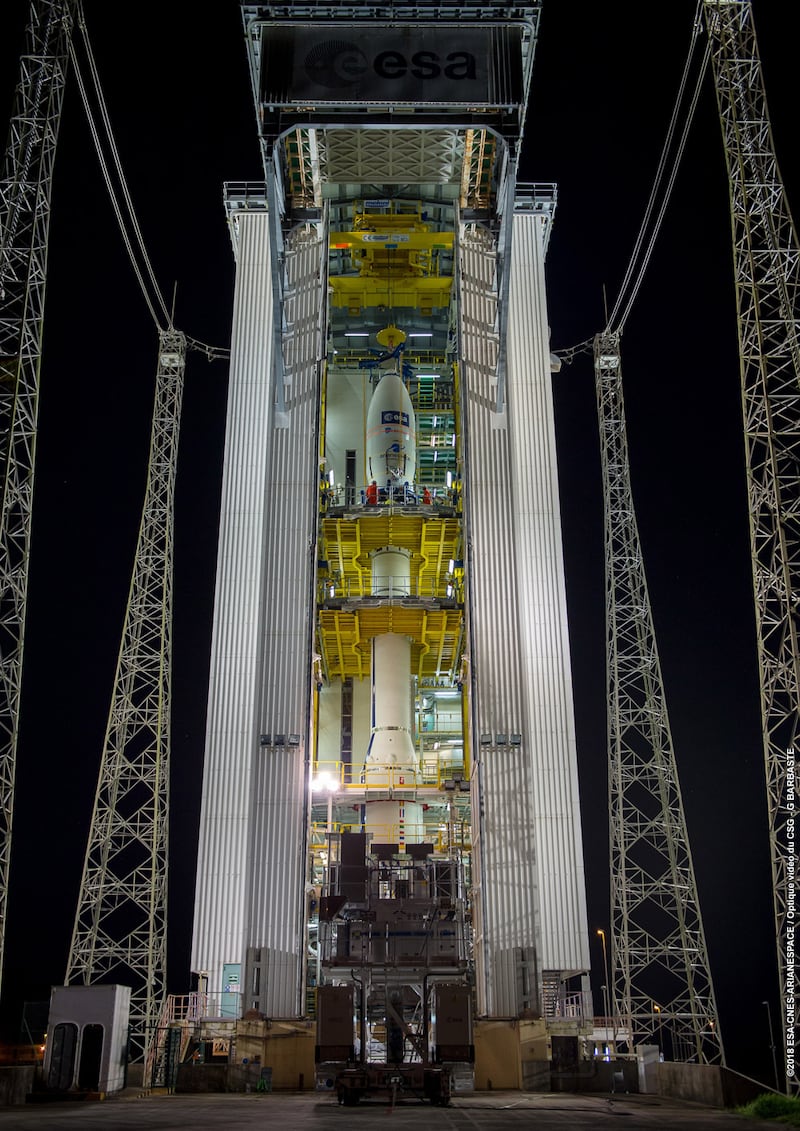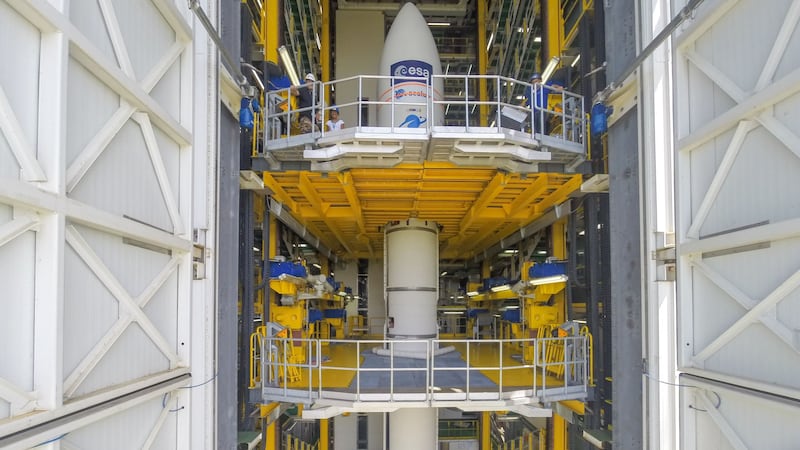A British-built laser satellite is set to launch into space on a three-year mission to measure wind speeds.
The Aeolus spacecraft is taking off on a rocket from Kourou in French Guiana, 24 hours later than planned due to bad weather above the spaceport.

The European Space Agency mission is expected to provide important data which could significantly improve weather forecasting around the world.
Aeolus, named after the keeper of the winds in Greek mythology, was originally due to launch in 2007 but the project was beset by delays.
The satellite was built by Airbus Defence and Space in Stevenage and – equipped with a powerful laser – will be the first able to directly measure wind speeds on Earth from space.
The countdown starts today for the launch of the @ESA_EO #Aeolus mission – the first space mission to profile Earth's winds. Liftoff is set for 23:20 CEST (21:20 GMT).
Join us for live coverage from 23:00 CEST (21:00 GMT) via https://t.co/POll6q6LHa pic.twitter.com/d9PQwMsVy5
— ESA (@esa) August 22, 2018
Flying 200 miles above Earth, the data it collects may improve the accuracy of weather forecasts and help protect people from disasters such as floods and hurricanes.
James Cotton, a satellite winds scientist at the Met Office, said: “The Aeolus mission aims to improve the global coverage of wind profile observations, including areas where in situ wind measurements are currently lacking, such as over the oceans, in the tropics and the Southern Hemisphere.
“Within numerical weather prediction, we expect the Aeolus winds to be particularly useful for improving our analysis of the atmospheric state in the tropics, a region where we know the model wind errors are large.”
🎥 As the @ESA_EO #Aeolus wind mission prepares for liftoff at 23:20 CEST (21:20 GMT) today, find out why it is important that we learn more about winds on Earth and how they affect our planet Watch more on YouTube: https://t.co/nL6VUapFiQ pic.twitter.com/ec3rXCNug6
— ESA (@esa) August 22, 2018
Aeolus will carry just one large instrument, a Doppler wind lidar called Aladin.
The tool will emit short, powerful light pulses from a laser through the atmosphere and collect light that is “backscattered” from particles of gas, dust and droplets of water moving in the wind.
Meteorologists will be able to use this information to help predict the weather.

Science minister Sam Gyimah said: “The Aeolus mission is a great example of the potential real-world impacts that space can have on Earth.
“Its data will lead to more reliable weather forecasts that can be used by farmers, seafarers, construction workers and others to improve productivity and safety.
“Space is a key part of our modern industrial strategy and it is work like this that shows how vital our role in the European Space Agency is in bringing real benefits to UK companies.”








